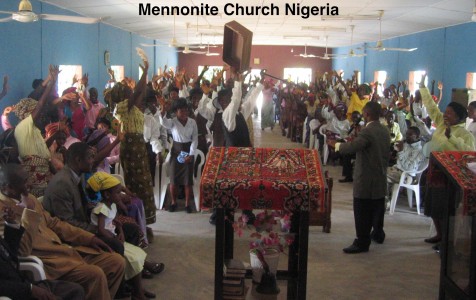World Christianity: Diversity within a Shared Tradition
 World Christianity is a construct that provides for a meaningful understanding of this faith movement in an age of global interconnections and inter-cultural exchange. It allows people from cultures across the globe to share a religious identity through identification with the story of its beginnings in first century Palestine. They find this story and the traditions it has spawned to be in some way significant for their contemporary religious identity, often finding in it paradigms of how God still interacts with the world today.
World Christianity is a construct that provides for a meaningful understanding of this faith movement in an age of global interconnections and inter-cultural exchange. It allows people from cultures across the globe to share a religious identity through identification with the story of its beginnings in first century Palestine. They find this story and the traditions it has spawned to be in some way significant for their contemporary religious identity, often finding in it paradigms of how God still interacts with the world today.
Along with an understanding of Christianity as an identity shared across the globe, world Christianity allows for the authentication of diverse local expressions. As people increasingly encounter a multitude of cultural mixes, it allows for a multicultural understanding of the faith. For those who want to move past colonial attitudes, it provides a conception of the faith that moves beyond the hegemony of western assumptions and recognizes the agency of local, often minority, faith expressions that arise out of the negotiation of indigenous and external influences.
My own location in the world Christian movement is as a member of Mennonite Church USA (MCUSA) who lives among Christians in West Africa. Observations growing out of my work with Mennonite Church Nigeria (MCN) illuminate characteristics of world Christianity. Members of both MCUSA and MCN understand their religious identity to be rooted in the story of the birth of the Christian movement. They also share an identification with the 16th century Anabaptist movement as formative for their faith in the 21st century.
Within that shared identity there is creative diversity. Members of MCUSA often look to Matthew chapter 5 as a key text that informs their religious identity and interaction in the world, finding therein motivation for ethical living and working for peace. Members of MCN, on the other hand, find the first chapters of the book of Acts of the Apostles to be key to their Mennonite identity and faithful interaction in the world. For them the manifestations of the Holy Spirit as a powerful instigator of signs and wonders and the successful expansion of the Christian movement are priority characteristics that should manifest themselves in their midst even today.
There is a similar diversity in conceptions of the significance of the 16th century Anabaptist movement. In the North American Mennonite community it is not uncommon to hear an excerpt from the writings of Menno Simons: “True evangelical faith… cannot lie dormant… it clothes the naked; it feeds the hungry; it comforts the sorrowful; it shelters the destitute…” This is an important identity-building link to the 16th century Anabaptist heritage. At a recent seminar on Anabaptist beginnings that I led for MCN leaders, they acknowledged the appropriateness of Christian service that this excerpt symbolizes. They were, however, more drawn to Menno Simon’s insistence on rebirth. They found Hans Hut’s identification of the kingdom of God as power that renews the individual to be a key insight for Christian life. Understanding the power of the Holy Spirit for renewal and increased spiritual awareness seemed to take priority over the ethical results that renewal might engender.
While neither of these two national churches would deny the importance of the other’s faith expressions, there is diversity, both in what they find useful in the shared faith tradition and in the way they appropriate it to engage their respective contexts. The conceptual language that allows us to converse about the significance of that diversity within the shared tradition is the gift that the construct of world Christianity gives to Christians and to those who study the global Christian movement.
Bruce Yoder
PhD Candidate in History, School of Theology